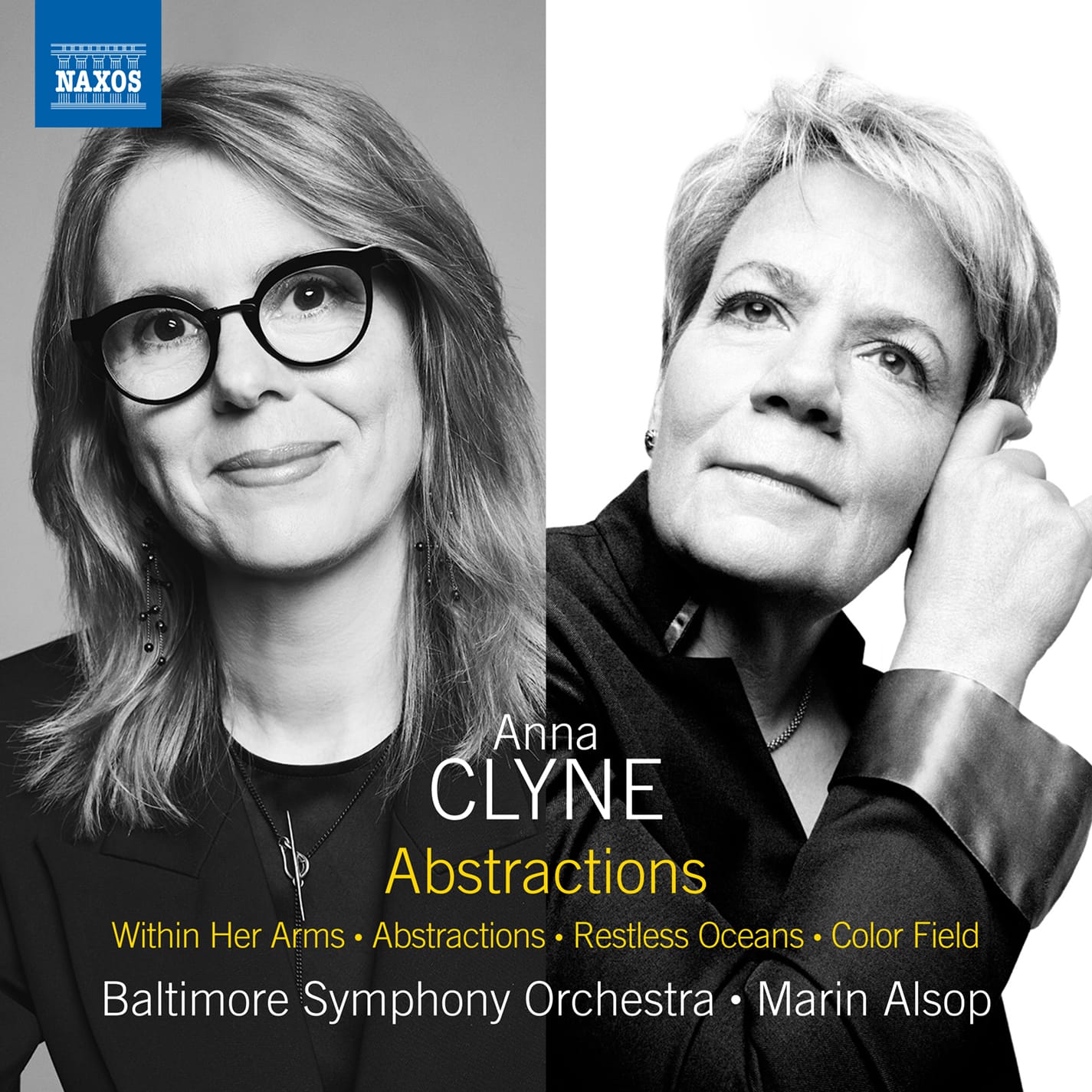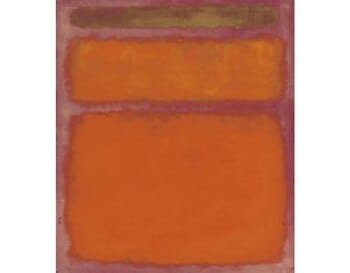Abstractions: Meeting composer Anna Clyne
Unhesitatingly recommended; this is vital, alive music of the first order

Released just yesterday (September 26, 2025) this is a tremendous introduction to the atmospheric, hauntingly beautiful world of Anna Clyne. It includes two World Premiere recordings.
London-born and US-resident, Anna Cluyne studied fist at Edinburgh and then at the Manhattan School of Music. She has been co-Composer in Residence with teh Chicago Symphony (alongside Mason Bates), e music premiered under the ton of Riccardo Muti, no less.
Clyne's Within Her Arms (2008/09) is a tender homage to he mother for 15 solo strings (6:3:3:3):
In a moment of grief I urned o music ... as soon as I got back to England, I sat at a piano with a recent photo of her ... nd I wrote the music in the next 24 hours.My instinct was to process [my loss] by composing, and I felt very close to her durig the writing process.
Each of the sting plays has the wn Lins in teh sloe: the music twists and turns sound a tone cluster. Th played of the Baltimore Symphony und Marin Alsop cate a hypnotic web of sound, febrile, vulnerable in shared grief:
... and here's a performance by The Knights and Eric Jacobsen via her publisher's, Boosey & Hawkes:
Abstractions, for which disc takes its title, was written in 2016, and is one of the pieces receiving its premiere here. The five movements are inspired by woks in heh Baltimore Musum of Art and in a private collection. As the composer puts it,
In drawing inspiration from these artworks, I have tried to capture the feelings or imagery that they evoke, the concept of the work, or the process adopted by the artists
The first of the Abstractions (2016) is “Marble Moon,” based on Sara VanDerBeek's 2015 Marble Moon. There is a kind of openness to the writing that puts me in mind of Britten's “Sea Interludes” from Peter Grimes (“Moonlight”). Construced over a sustained pedal one, the sound is like that of a breathing organ. Th painting shows a photo of an eclipse juxtaposed with photo of light falling on the marble architecture of Baltimore's Mount Vernon neighbourhood:
The second movement was inspired by a 12-panel aquatint Auguries (2010) by the Ethiopian-born American artist Julie Mehreto (you can see the work by following this link).The artwork suggest s the movement of a flock of birds, and Clyne's writing is dynamic, alive, swooping in the manner of avian flight. Alsop ensures a massively involving experience. Almost Romanic string lines, complete with glissando, seem themselves bone. It's a near-cinemtic ride:
The agonisingly simply yet haunting image Caribbean Sea, Jamaica (1980) by photographer Hiroshi Sugimoto (see it here) is the inspiration fo “Seascape” (Sugimoto's website is a veritable treasure trove of art, by the way). Keening woodwind speak over decidedly pos-Impressionist soundscape:
Elizabeth Kelly's River II, 2005, inspires “River” is a busy, dymnic, actin piece of art (see it at the Met Museum's website here). That busy-ness spills over into Clyn's extravagance of scoring. Alsop's performance is bracing indeed, the sings magnificently disciplined. As part of the music's woodwind-encrusted calming, three Tibetan bowls see the music out:
A simply fascinating piece of art - etching and aquatic on paper - by Brice Marden (1938-2023) simply called 3 inspires the fifth and final movement, “Three”. Even low string arpggiations . Marden's art is elegant (I agree with the booklet note annotator the one can see the influence of Japanese calligraphy in that piece, part of.larger series entitled, Etchings to Rexroth, 1986: you can see the entire series here, by clicking on the various images below the atiwok - all 25 of them!. There is a el feeling of organic movement in Clyn's response, robust, the perfect close, and Alsop releases the score beautifully:
Writen in 2018, Restless Oceans begins with an orchestral Urschrei. Here's what he composer has to say:
I composed “Restless Oceans” for Marin Alsop and the Taki Concordia Orchestra for performance at the World Economic Forum Annual Meeting in Davos. The piece received its world premiere at the opening ceremony in 2019 where Marin Alsop was presented with the Forum’s prestigious Crystal Award in recognition of her championship of diversity in music.
This is an astonishing work, clearly influent by Stravinsky's Rite. The player vocalise non-semantic tones as par of the piec/s ireprssibl energy; Alsop ensures a ferocious account:
In total contrast, Color Field (2020) begins gentle, looping us back to Within Her Arms. h inspiration here is the work of Mark Rohko, specifically his 1961 Orange, Red Yellow painting (part of his Color Field works):

Explaining he relationship to cool, Clyne says the following:
While creating music that evokes colours, I explored synaesthesia – a perceptual phenomenon whereby a person can hear sound, pitch or tonal centres and then correlate them to specific colours, and vice versa. In the case of composer Scriabin, he associated specific pitches with specific colours, which I have adopted as tonal centres for the three movements of this piece: Yellow = D, Red = C, and Orange = G
Clyne's “Yellow" is indescribably beautiful, a glowing ball of etheric sound. Notice how perfectly calibrated the Baltimore plyers are - here is a real art to this, and Alsop's ear is phenol in realising Clyne's vision:
The orchestra certainly seems to see red in the movement of that name. If the first movement plays with the etheric, his is entirely earth-based, somewhat Stravinskia at times, somewhat Ivesian at others, and including a remarkable melody that seems Arabic at heart!:
The colours yellow and red combine to make orange, and so it is that elements of the first two movements combine in the finale (“Orange”). Texture is to the fore here, and what beauty there is!:
his recording was made at th premiere and just after, so cries real weight.One can almost hear th freshness, the pacing sense of presenting the hitherto unknown.The close of “Orange” is almost cinmaogpic; a terrific piece, brilliantly realised by Alsop and her Baltimore forces.
Unhesitatingly recommended; this is vital, alive music of the first order.
